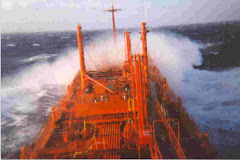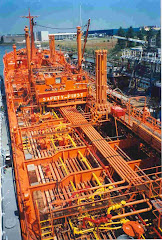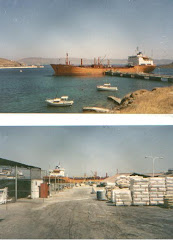Back in October 2018, I published on this blog a somewhat negative article on scrubbers as a means of compliance for IMO2020 regulations. Today we are close to finishing the first month of IMO2020 in full implementation. I think it opportune to revisit this subject in view of the experience to date with these regulations now in force.
I always saw scrubber refitting as speculative by nature depending on fuel differentials. I never liked the concept of making a ship a factory to remove sulphur from heavy residual fuel oil. I considered direct use of compliance low sulphur fuel oil from the refineries as a more efficient solution. Also I believe in a level playing ground for the shipping industry and scrubbers create a tiered market for the vessel segments where they are widely used.
In fact, the initial fuel differentials have been much wider than initially forecast. The actual fuel price spreads are well above projected levels to support the scrubber investment. This has made the prime movers like Scorpio, Star Bulk and others the winners and substantial beneficiaries on the initial scrubber wager. Indicatively, Okeanis VLCC's are earning a staggering US$ 121 m per day as scrubber savings kick in. The Greek shipowner says it has already made back 44% of the retrofit bill for its big tankers.
Further scrubber refitting is proving to be an excellent asset play. Close to 20 modern or resale VLCCs are being touted for sale at high prices in a market that is offering shipowners strong returns.
Looking ahead, we do know yet whether fuel spreads may narrow. The high differentials may be simply a product of the supply disruption in initial market conditions. Over time, the prices may normalize to lower levels. Fuel spreads may drop significantly.
One issue to be resolved is the matter of the continued supply and availability of traditional heavy residual fuel oil. Refineries have ramped up production of low sulphur fuel oil and are earmarking HSFO for other uses than marine fuel. A smaller supply of HSFO and tighter availability may result in higher prices and also storage issues for the smaller quantities in the market for marine fuel. Already it is reported that there are availability issues for supply of HSFO in the Far East and ships forced to Singapore to bunker heavy residual fuel oil.
In any case, the scrubber school is presently at the top of the shipping world as the winners in this debate. Some are thinking about monetizing their position by selling the scrubber-fitted units at a premium, but this depends on willing buyers and nobody knows how long present fuel spreads will remain of whether fuel spreads may narrow.
Furthermore, dry bulk rates are very weak and tanker rates are falling, so regardless of whether the vessels are fitted with scrubbers or not, the earnings margins are not improving.
Postscript: Fuel spreads have now collapsed with the dramatic fall in oil prices. Plans for scrubber installations are now facing massive cancellations, particularly in the dry cargo and containership sectors. We will see in coming quarters whether the wagers made by companies like Star Bulk and Scorpio Tankers pan out in earnings results for their shareholders.
Furthermore, dry bulk rates are very weak and tanker rates are falling, so regardless of whether the vessels are fitted with scrubbers or not, the earnings margins are not improving.
Postscript: Fuel spreads have now collapsed with the dramatic fall in oil prices. Plans for scrubber installations are now facing massive cancellations, particularly in the dry cargo and containership sectors. We will see in coming quarters whether the wagers made by companies like Star Bulk and Scorpio Tankers pan out in earnings results for their shareholders.








